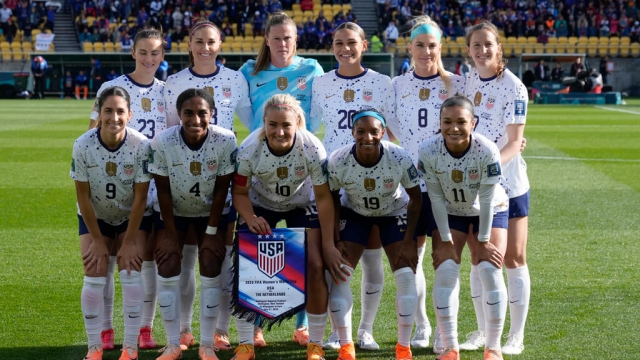The debate over equal pay in pro sports has continued for decades.
"Everyone thinks women should be thrilled when we get crumbs. I want women to be able to have the cake, the icing, and the cherry on top too," said Billie Jean King at the 2016 Miami Open.
In late 2022, Congress passed the Equal Pay for Team USA law, ensuring that women playing for international teams must make the same as men.
For national teams and athletes, tennis leagues have made significant moves toward equal pay here in the U.S.
Earlier this year, the Women's Tennis Association announced there would be equal prize money offered to both male and female athletes at more competitions, including the grand slam tournaments.
But a fair solution for the pay gap across the rest of the sports world seems elusive.
A recent CNN analysis found that internationally, women playing in the 2023 World Cup earn 25 cents to the dollar of men, a quadruple jump from the last cup but still far below their peers.
Other pro sports have seen low wages for women.
In hockey, about half of Team USA holds second and third jobs to pay the bills despite training and playing year-round.
The average salary for WNBA athletes was just over $102,000 in 2022, and many athletes sought work overseas for higher pay. Countries like China and Russia can offer contracts for hundreds of thousands of dollars.
The average NBA salary is $8.2 million per year.
Of the top 50 highest-paid athletes, according to Forbes, there is just one woman: Serena Williams, at number 49.
But some prominent athletes and sports officials have voiced skepticism over a blanket equal pay policy in a number of sports. Critics say the pay gap is an unfortunate but fair distribution based on revenue generated and viewership. Major men's sports in the U.S. still bring in bigger revenues and audiences than women's sports.
But it's difficult to make a direct comparison between revenues and viewership without examining sports media coverage itself and the lucrative broadcast rights.
SEE MORE: Fewer Coaching Jobs In Women's Sports Are Going To Women
"It takes time now for women to catch up after 50 years of lack of investment. It takes time for them to catch up, and now develop the audience in the same way. And how do you develop an audience? You get on television," said Donna Lopiano.
Broadcast rights make up the biggest share of revenue for major sports teams in the U.S.
Skeptics for equal pay argue women’s sports have less interest and thus aren't worth the bigger deals.
But is it a matter of less interest or less exposure? Would more people be interested in seeing women play if the hype levels and ability to tune in were the same?
A University of Southern California and Purdue University study found 95% of total television sports coverage in 2019 focused on men’s sports.
The imbalance was similar in social media posts and sports newsletters.
"This has nothing to do with whether or not there are great, you know, women athletes. This has everything to do with who is controlling mass communications," said Lopiano.
There are signs that the existing TV deals for women aren't as rich as they could be.
A 2021 NCAA analysis of March Madness tournaments found the broadcast rights for the women’s teams were undervalued by millions.
Even though fewer people watched the final for women's college basketball between 2015 and 2021, total viewers for the women’s final increased by 32%. While for men it has declined by 40%.
The women’s game was only available on cable, while the men's had a wider reach with free network TV.
A 2021 white paper for YouGov surveyed reasons why viewers around the world don't engage with women’s sports as much.
The top reasons given were: "less media coverage," "lack of knowledge of teams and athletes," and "limited marketing."
When women athletes share a broadcast and marketing promotion with men, we see the gap in interest disappear.
For example, U.S. audiences tend to be equally interested in male and female athletes when it comes to the Olympics, compared to pro sports and college sports.
Pro tennis players also receive equal media coverage and are broadcast together.
Female tennis matches and players draw similar viewership numbers as the men's.
As American interest in women’s sports grows and major sports leagues prepare for new TV rights deals, we may see slow progress toward more equal media coverage.
And as the playing field slowly evens out, the rise of media coverage may bring higher revenues, viewership, interest, and pay for women athletes.
Trending stories at Scrippsnews.com




